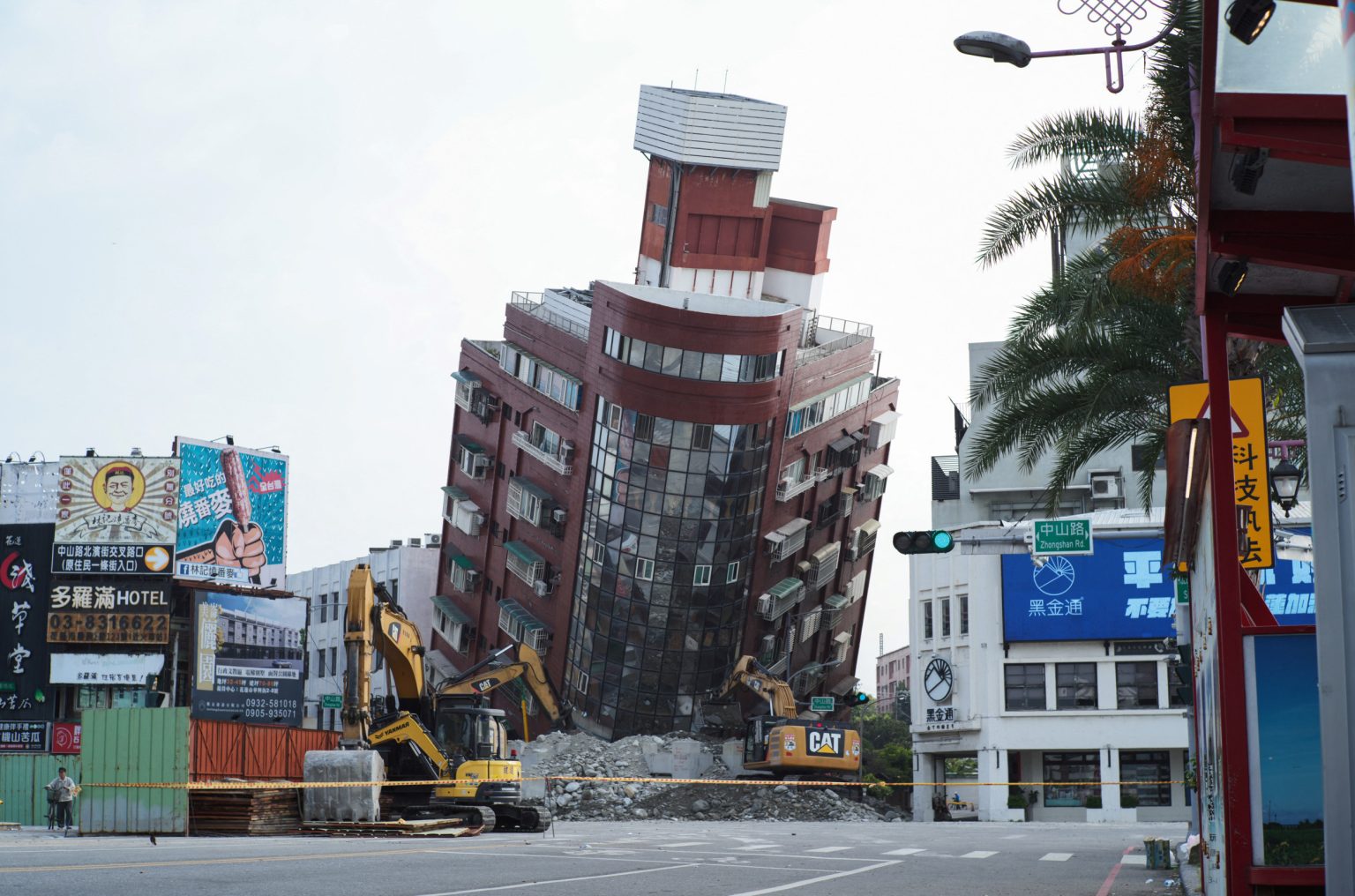The deadly earthquake that struck Taiwan on Wednesday morning was the most powerful temblor to rock the island in decades. Taiwan, located along the Pacific “Ring of Fire,” experiences frequent seismic activity and prepares for earthquakes with drills and public alerts. However, authorities did not expect the quake on Wednesday to be as strong as it was, resulting in more serious damage and casualties. The quake, with a magnitude of 7.2 according to Taiwan’s monitoring agency and 7.4 according to the U.S. Geological Survey, had its epicenter near the east coast city of Hualien, leading to multiple aftershocks throughout the day.
As of Wednesday night, at least nine people had died in the quake, with over 1,000 reported injuries. Rescue crews have been working tirelessly to search for those who may be trapped under the rubble and stabilize damaged buildings. Roughly 70 workers were stranded at rock quarries, with six workers being airlifted to safety. The destruction in Hualien was significant, with 48 residential buildings sustaining damage and infrastructure such as water and electricity being restored. Videos shared on social media showed buildings leaning at steep angles and firefighters rescuing people trapped in partially collapsed structures.
The earthquake and severe aftershocks led to at least two dozen landslides and widespread infrastructure damage in Hualien. The city had previously been struck by a deadly quake in 2018, resulting in 17 fatalities and the destruction of a historic hotel. The latest quake was a reminder of the region’s vulnerability to seismic activity and highlighted the need for continued preparedness measures. Authorities and rescue teams have been working diligently to address the immediate aftermath of the quake and provide assistance to those affected by the disaster.
Taiwan’s history with earthquakes, including the devastating “921 quake” of 1999, has shaped the island’s approach to disaster preparedness. With a population of 23 million, Taiwan faces unique challenges in mitigating the impact of earthquakes and ensuring the safety of its residents. The recent earthquake serves as a sobering reminder of the unpredictable nature of seismic activity and the importance of ongoing monitoring and response efforts. As Taiwan continues to recover from the quake, efforts to assess and rebuild damaged structures will be crucial in restoring normalcy to the affected areas.
The global impact of earthquakes, particularly in regions like the Pacific “Ring of Fire,” underscores the interconnectedness of natural disasters and the need for international cooperation in responding to emergencies. The resilience of communities affected by earthquakes, such as in Taiwan, highlights the strength and determination of individuals and organizations involved in disaster response. As communities come together to support those affected by the earthquake, the importance of solidarity and assistance in times of crisis is evident. By learning from past experiences and implementing effective disaster preparedness measures, Taiwan and other earthquake-prone regions can better cope with the challenges posed by seismic activity.


